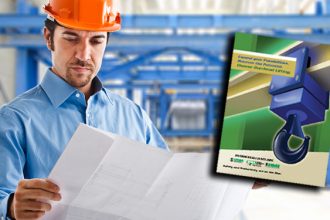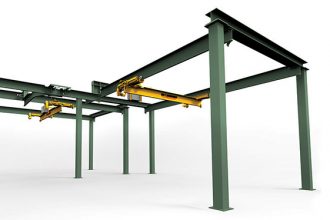Updated Manuals And Best Practices Documents For Hoist Operation Released

To ensure the safety and productivity of workers using overhead hoist equipment, the members of the Hoist Manufacturers Institute (HMI) produce a series of technical papers detailing how to properly operate and maintain hand, lever or powered hoists. The group periodically reviews the information to ensure it is both accurate and current; as well as to verify that the overview of safe use practices remains comprehensive and useful. HMI recently completed this review and updating process for seven different documents, all available on the Technical Papers and Articles page of HMI’s website:
- 23 – Operator’s Manual – Hoist. This booklet lists the qualifications required of a hoist operator, as well as the dos and don’ts of operating the equipment. It includes a list of recommended safety practices intended to supplement the facility’s own safety practices and hoist manufacturer’s instructions.
- 24 – Inspection and Maintenance Manual – Hoist. This document guides hoist inspection and maintenance personnel with information and suggestions for thoroughly performing those tasks. Its intent is to provide a better understanding of safe hoist inspection, and maintenance to enhance the safety of people and machinery on the facility floor.
- 75 – Operator’s Manual – Lever Hoist. This booklet details the qualifications required to operate lever hoists safely. It also explains how operators must consider and anticipate the motions, actions, and loads associated with operating the lever hoist.
- 74 – Inspection and Maintenance Manual – Lever Hoist. Intended for inspection and maintenance personnel, this document provides information and suggestions for performing those tasks. Its intent is to provide a better understanding of safe lever hoist inspection, and maintenance to enhance the safety of people and machinery on the facility floor.
- HMI Recommended Practices for Hand Chain Manually Operated Chain Hoists. Available in three languages — English, French, and Spanish — this single page document offers guidelines and recommended practices for this type of hoist. Many of the included warnings and operating practices come from American National Standard ASME B30.16 and are intended to avoid unsafe hoisting practices which might lead to personal injury or property damage.
- HMI Recommended Practices for Lever Hoists. Providing guidelines and recommended practices for this type of hoist, the single page document is offered in three languages: English, French, and Spanish. Many of the included warnings and operating practices are sourced from the American National Standard ASME B30.21 and are intended to avoid unsafe hoisting practices which might lead to personal injury or property damage.
- HMI Recommended Practices for Electric and Air Powered Hoists. Intended to avoid unsafe practices which might lead to personal injury or property damage, this single page document includes guidelines and recommended practices for this type of hoist. Available in three languages — English, French, and Spanish — many of the included warnings and operating practices are sourced from the American National Standard ASME B30.16.
Other updates include modifications to ensure alignment with current industry standards, as well as the addition of links to make it easier for readers to access HMI’s technical documentation and online library. The information contained in each document is brand-neutral; that is, it applies universally to a wide range of hoists from different manufacturers in order to help operators who use hoist equipment from multiple suppliers in the same facility.
Looking for more information on hoist systems? The members of the Hoist Manufacturers Institute (HMI) offer a variety of resources—including a comprehensive library of product guides; a hoist certification program; OSHA Alliance safety tip sheets, fact sheets and quick cards — via its website at www.MHI.org/hmi.



